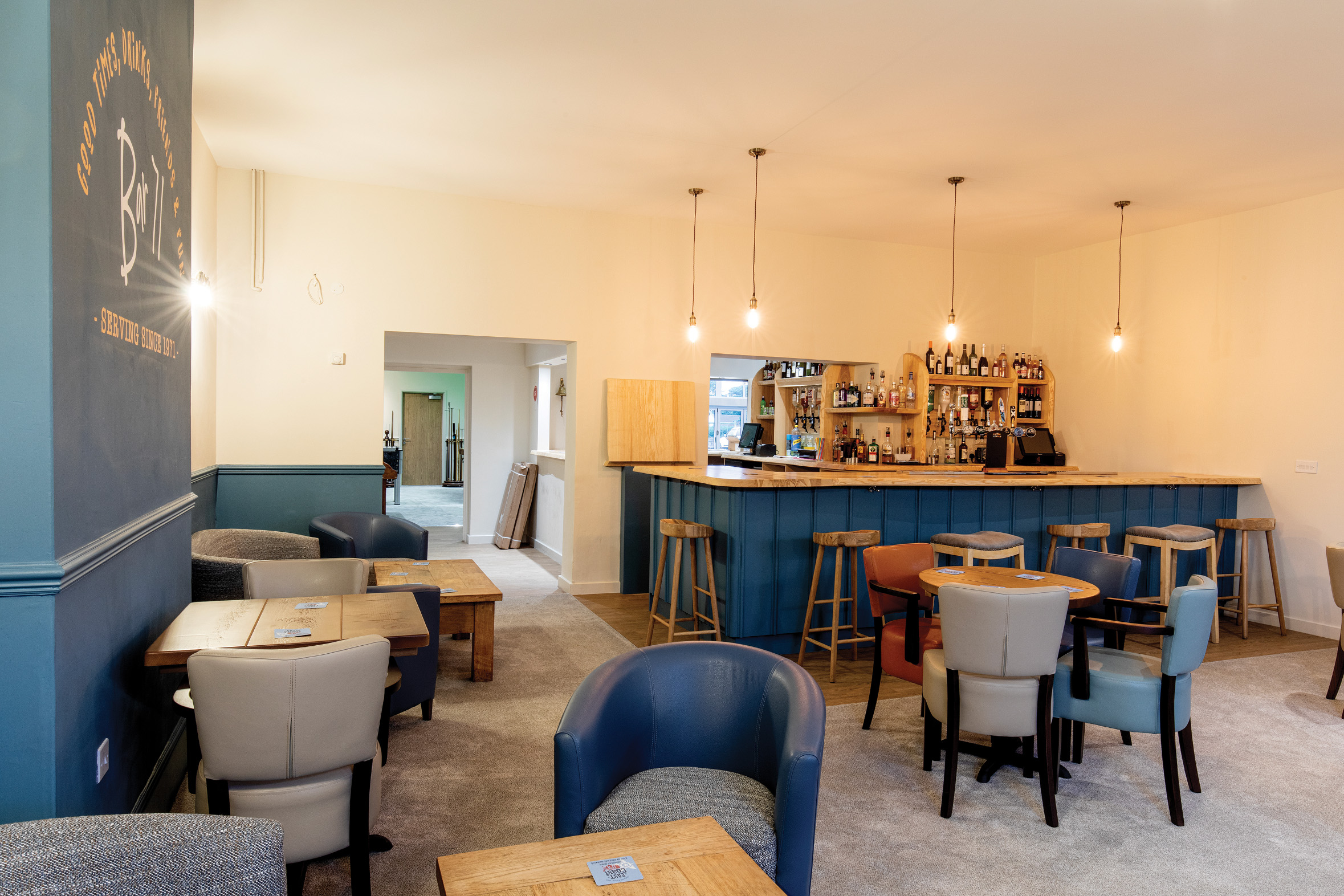Brancaster sits on the North Norfolk Coast, in an officially designated Area of Outstanding Natural Beauty. It is extremely popular with holidaymakers and second-home owners, who are drawn to it by its breathtaking scenery, varied wildlife, delicious seafood, and its beach’s four miles of golden sand. But Brancaster is also a village well-populated with permanent residents, who need services, social activities, and a sense of community all year round.
Brancaster Village Hall is positioned on the main coast road that begins in King’s Lynn, passes through many of North Norfolk’s picturesque villages, and ends in Cromer. The hall, officially named the Simms Reeve Institute after a local aristocratic family, was built in 1905 and is a fine example of the kind of brick-built public buildings common in the Victorian era. The hall has been home to the village’s post office and innumerable social and community clubs over the decades since.
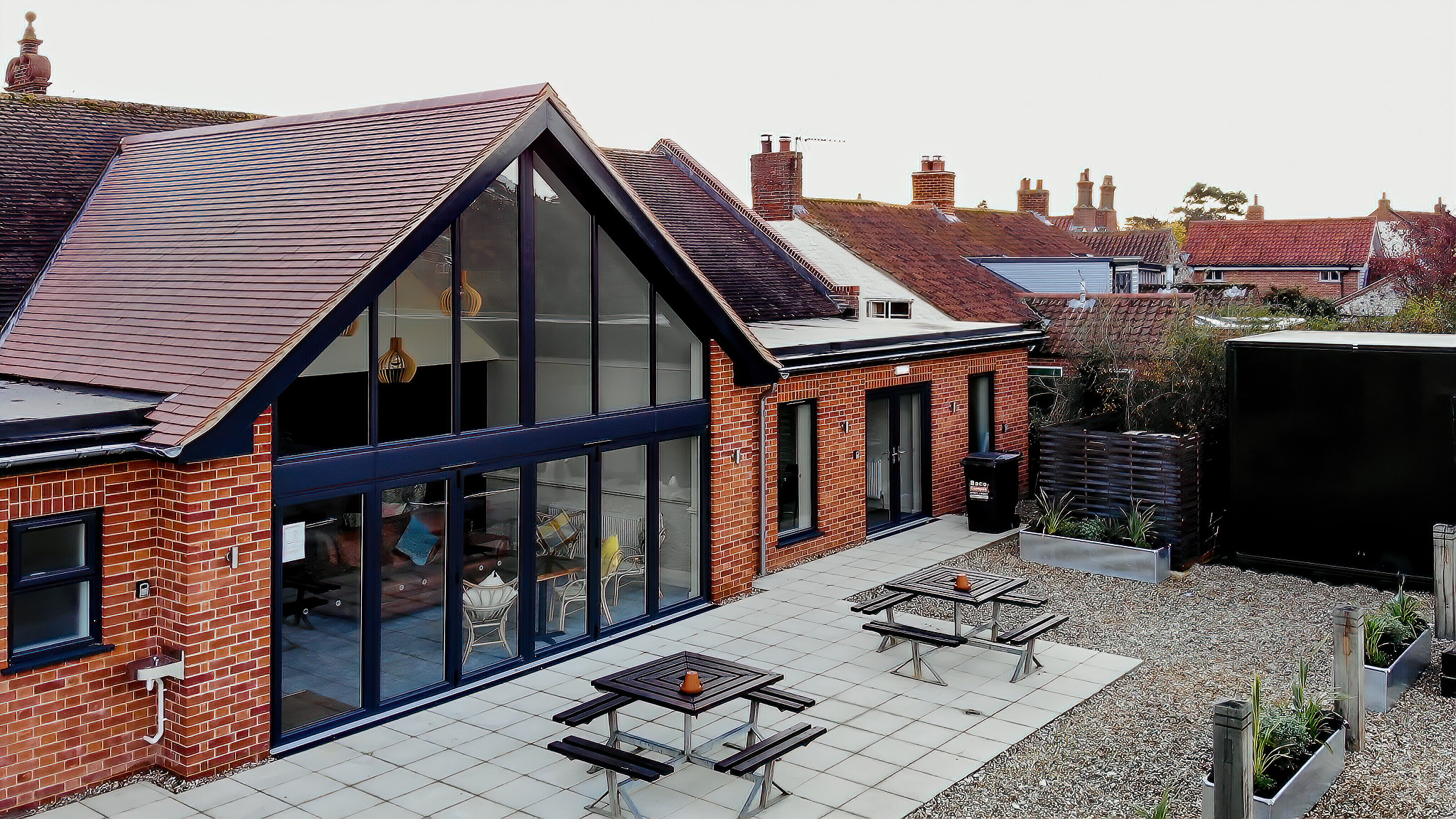
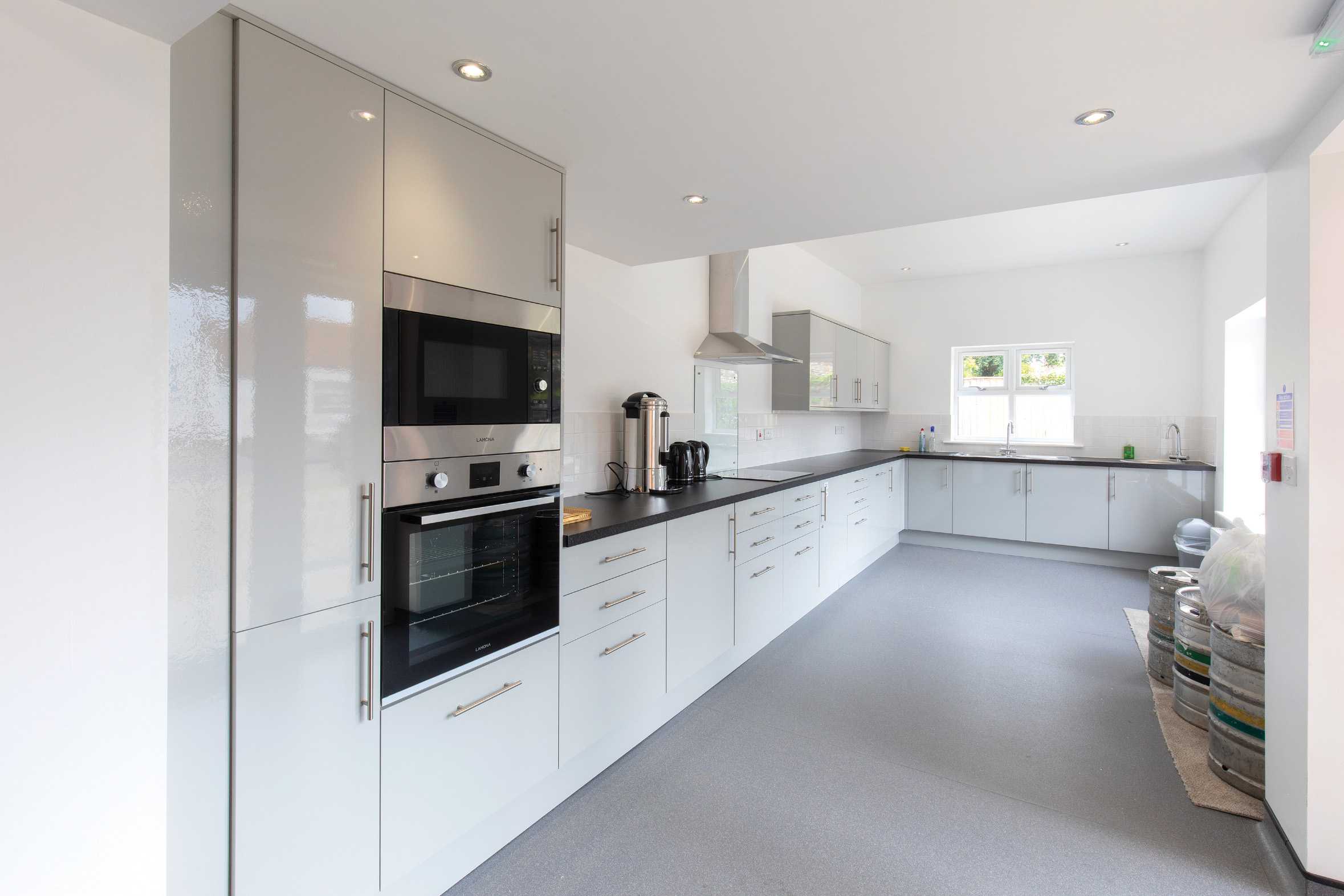
In recent years though, like many village halls, it had become less used as the facilities failed to keep up with modern lifestyles. In fact, the social club was named after the hall’s last major renovation in 1971. So, in 2015 the Friends of the Village Hall decided the time had come to stop making ‘hand-to-mouth’ repairs and do something more ambitious.
“A very substantial cornerstone grant of £406,933 was secured from The National Lottery Community Fund,” says John Wareham, a trustee of the village hall. “Sadly, John Butterwick, the moving spirit behind getting the grant, passed away just before the award was confirmed in November 2017, so that was the point at which I got involved”.
Local fundraising, to raise additional funding quickly got underway, and ultimately succeeded in securing a total of over £250,000.
“The support has been astonishing – and most important has been the breadth of that support,” adds
John, “We have received many very generous and sizeable donations from local residents, businesses and charitable organisations – but we have also received a tremendous number of smaller donations (including one of £15 in an envelope posted through my front door). Every single donation has been of equal significance to the overall objective of the project – which has been to deliver a wonderful facility that has been created by, and behalf of, the entire community.”
This inspirational commitment called for an inspirational design, and that was where Vertex Architecture got involved. Jordan Cribb, of Vertex Architecture, designed a plan that would extend the hall significantly, but also revolutionise the way it could be used.
“The unique part of this design isn’t how it looks on the outside,” says Jordan, “it’s how it transforms the way the inside can be used. One of the most important principles of my work is circulation: you should be able to move around a building naturally, without having to try.”
Adding a new entrance of glass doors and huge windows at the rear of the hall creates a natural flow between the games room and the play area, tennis court and field outside, and floods the games room with light; creating a family-friendly atmosphere.
The entire hall has been decorated with an emphasis on a modern, airy feel: all the work of a committee of local people.
“Again, the key to this design was the interior,” says Jordan. “The building lets the light in, and the decoration needed to make the most of that. I kept costs down so we’d have enough budget left over to spend on a really high-quality finish throughout.”
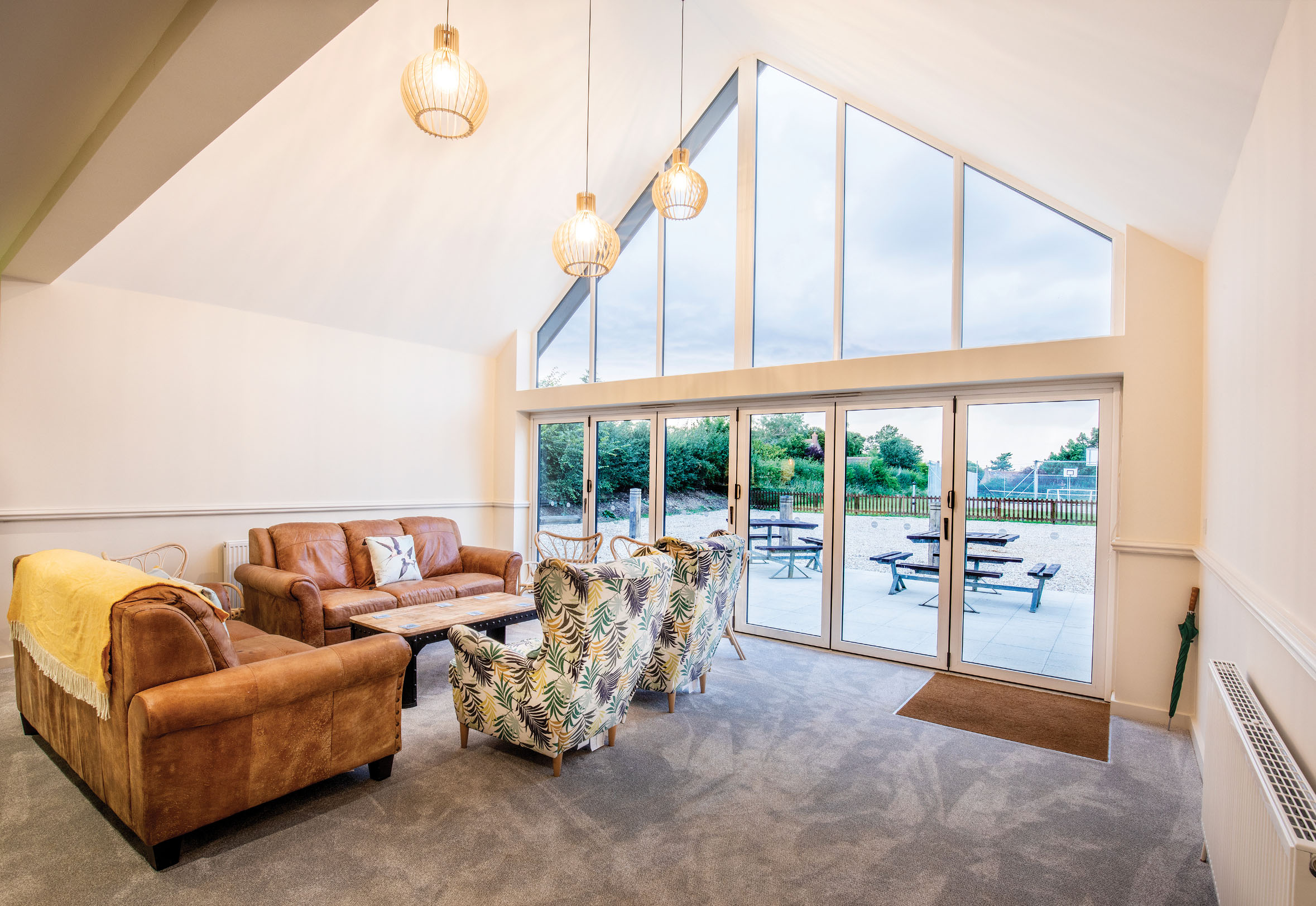
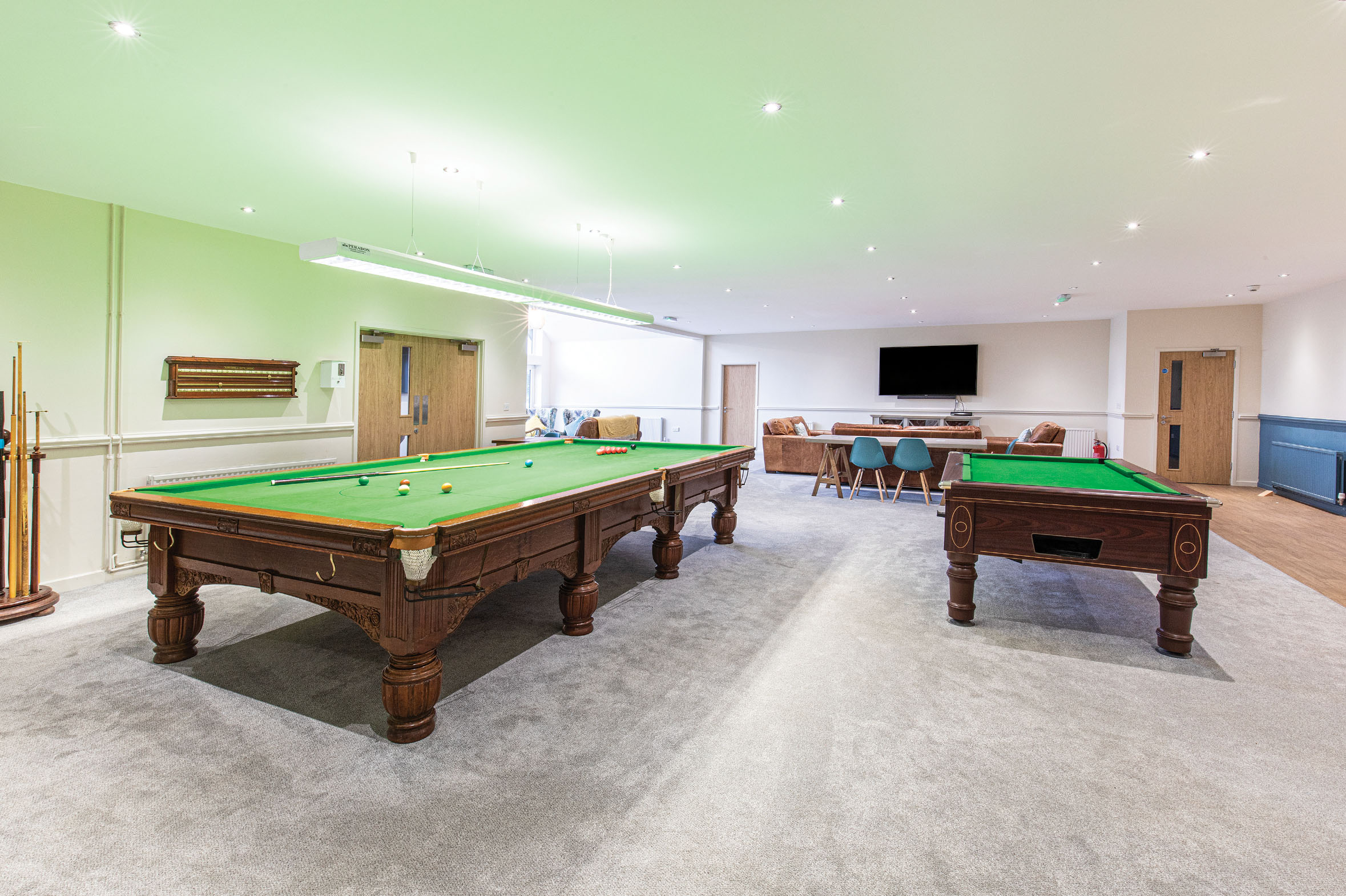
“We commissioned Vertex Architecture because I knew Jordan would deliver the kind of transformational design we needed,” adds John, “and because he’d understand that this project is about the heart of our community, not just a building. There was a lot of enthusiasm in the village to do something bold, and after an extensive consultation process we had a ‘wish list’ of things we wanted – we needed an architect who could make it work”.
The extension houses new meeting rooms and toilet facilities and the relocated kitchen, post office, and village store.
“The key to my design is that the rooms can be closed off from each other and used in lots of different
combinations,” Jordan explains.
“A big function can happen in the evening using all the space, and then in the day a club can use a
meeting room, while youngsters play pool in the games room and customers use the post office, all at
the same time. A building like this, in this location, has to be flexible and have more than one use. It
means it’s much more capable than before of providing a wide range of facilities and services to people from across the community – this will allow the hall to fulfil its charitable responsibilities to everybody in the village.”
The wholehearted support from the village that started with the fundraising was continued: the
lighting, wooden floorboards, and even the paint, were donated by local residents. One villager offered
his expertise in marketing to help develop branding for the hall and for Bar 71, another provided a lot of
the furniture for free, while another provided all of the health and safety expertise for the project.
“It has truly been a communitywide effort,” says John.
After eight months of hard work, the hall was re-opened in August, just in time for Brancaster Day – the village’s annual celebration – and its renaissance is already proving a success.
“We have lived here ten years,” says John, “and I’ve never seen so many young people or families
using the hall. Now it’s packed out at lunchtimes and in the evenings. The whole village was behind doing something more than just a modest renovation and that decision has been vindicated very quickly. We’ve planned for the next fifty years and this is only the beginning”.
